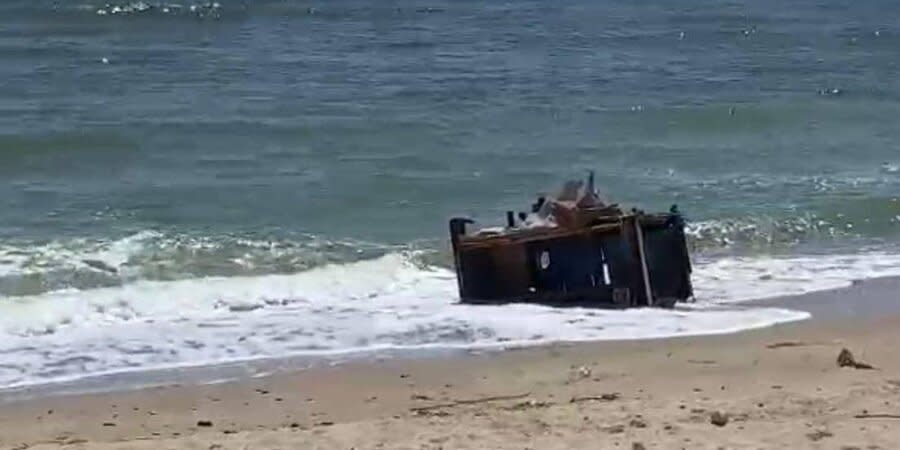Border guard video shows Odesa Oblast sea transformed into ‘dumpsite and graveyard for animals’

In a post on Facebook on June 10, the Border Guard Service shared a video exposing the shocking aftermath of the incident, including the washing ashore of human belongings, ammunition, and the bodies of dead fish and animals.
Read also: Ecologist reveals damaging consequences of Kakhovka dam’s destruction
According to the border guards, the sea is "transforming into a dumpsite and graveyard for animals."
The video footage reveals houses and their remnants, furniture, household appliances, and cars floating in the sea, as if signaling the beginning of a watery apocalypse.
“The consequences of this ecocide are horrifying. Moreover, the water carries mines and ammunition," the State Border Guard Service said.
Read also: Ukraine releases list of landmarks affected by Russian destruction of Kakhovka Dam
In light of this hazardous situation, they implore residents to promptly notify the relevant authorities if they encounter any dangerous objects washed up on Odesa’s coastline.
The Black Sea coastline of Ukraine’s Odesa Oblast begins about 25 kilometers from the mouth of the Dnipovska Gulf, which is the joint outlet of the Dnipro and the Pivdeniy Buh rivers into the Black Sea.
The coastline stretches about for about 200 kilometers south and west of the gulf.
Explosion at Kakhovka HPP — what is known
Russia’s troops invaded Nova Kakhovka more than a year ago. On the night of June 6, the dam there was blown from the inside. The water flow from the reservoir, which was close to its highest recorded water level, has endangered over 80 towns and settlements, including the regional capital of Kherson, downstream on the Dnipro River.
Read also: EU sends aid to Ukraine to tackle consequences of Kakhovka dam breach
The left (eastern) bank of the Dnipro River, which is under Russian occupation, is affected the most.
Ukrainian President Volodymyr Zelenskyy ordered an evacuation from the endangered areas and supply of safe drinking water to people who were supplied with water from the Kakhovka Reservoir, which is draining away because of the destruction of the dam.
Evacuation from the right bank of Kherson Oblast continues, even during the nighttime, while a catastrophe unfolds on the occupied left bank, which has suffered significantly more from the flooding.
The Kakhovka Hydroelectric Power Plant was completely destroyed and cannot be repaired, state hydroelectric company Ukrhydroenergo said earlier. The dam wasn’t destroyed completely, but significantly damaged, the Ukrainian military’s South Operational Command said.
Around 16,000 people on the right (western) bank of the Dnipro River in Kherson Oblast are in a “critical zone” at risk of flooding according to the oblast’s governor, Oleksandr Prokudin.
The Prosecutor General’s Office opened an investigation on the incident under article of the Criminal Code on ecocide.
President Zelenskyy has called Russia’s attack on the Kakhovka Hydroelectric Power Plant the largest man-made environmental disaster in Europe in decades.
Read also: Drone footage shows ruins of Kakhovka dam, flooded areas two days after Russian attack
Ukraine’s Defense Intelligence has said that the Russian demolition of the Kakhovka Hydroelectric Power Plant increases the threat of a nuclear disaster.
The mayor of the occupied town of Oleshky, Yevhen Ryshchuk, reported on June 8 that at least eight people had died as a result of the flooding.
At least five individuals lost their lives and another 13 were reported missing due to the explosion at the Kakhovka Hydroelectric Power Plant, according to Ukraine’s Interior Ministry.
We’re bringing the voice of Ukraine to the world. Support us with a one-time donation, or become a Patron!
Read the original article on The New Voice of Ukraine

